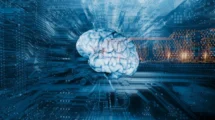It’s helpful to know the first 20 elements in the periodic table. Six of these elements make up nearly all of the mass of the human body. The first 20 items also give you a good idea of the different element groups.
They’re also used in more typical chemical reactions. The elements are listed in ascending order of atomic number. The proton number in each element’s atom is designated by its atomic number.
In declining atomic number order, the first 20 elements of the periodic table and their symbols are shown:
| Name | Atomic No. | Symbol |
| Hydrogen | 1 | H |
| Helium | 2 | He |
| Lithium | 3 | Li |
| Beryllium | 4 | Be |
| Boron | 5 | B |
| Carbon | 6 | C |
| Nitrogen | 7 | N |
| Oxygen | 8 | O |
| Fluorine | 9 | F |
| Neon | 10 | Ne |
| Sodium | 11 | Na |
| Magnesium | 12 | Mg |
| Aluminium | 13 | Al |
| Silicon | 14 | Si |
| Phosphorus | 15 | P |
| Sulfur | 16 | S |
| Chlorine | 17 | Cl |
| Argon | 18 | Ar |
| Potassium | 19 | K |
| Calcium | 20 | Ca |
What Makes Them Elements?
The staff must have one or more protons to be termed an element. If we count the protons in an element is used to identify it. In addition to protons, neutrons can be found in the atoms of elements, forming an atomic nucleus.
Furthermore, samples with the same number of protons but different numbers of neutrons are all isotopes of the same element. Atomic electrons also revolve around the nucleus.
Changing the number of electrons surrounding an atom turns it into an ion, but it does not affect the element’s identity. Because their atoms cannot be chemically divided into smaller parts, elements are referred to as the building blocks of matter.
Importance of Atomic Number
It refers to the number of protons contained within an atom. Protons are known to be concentrated in the nucleus of an atom. It is determined by the number of protons in an atom. As a result, an atomic number can be written as follows:
- The number of protons in one atom of an element is designated by its atomic number. It is an element that is equal to the number of protons in one atom of that element.
- The atomic code for sodium, for example, is 11 because each atom has 11 protons. For example, carbon atoms have six protons. This results in a six-atomic number. In the nucleus of a hydrogen atom, there is only one proton.
- The atomic numbers of all atoms in the same element are the same since they all have the same number of protons. Various elements have different numbers of protons in their nuclei.
- Two elements can’t have the same atomic number. Because each element has its unique atomic number, it can be used to differentiate it.
- For example, if the atomic number 6 is used, it signifies the element is Carbon. There are no other elements with an atomic number of six. This means that the atomic number separates the atoms of one element from those of another. Because different elements have varying numbers of atoms, their atoms also differ.
- The sum of the number of protons and neutrons determines an element’s mass number (A).
- The small contribution of mass from electrons is neglected when calculating the mass number. Subtract the number of protons from the atom’s mass number, and this mass approximation may be used to calculate an element’s neutron count quickly.
- The atomic masses of protons and neutrons are the same: one atomic mass unit (amu). Isotopes of the same element will have the same atomic number but different mass values.
- The atomic number, chemical symbol, and mass number are all examples.
An element’s atomic number Equals the number of electrons in one neutral atom
The main iota with an equivalent measure of protons and electrons is an unbiased particle. The electrons present in the impartial molecule, not the Ion, decide a component’s nuclear amount.
A particle, then again, is produced by the expansion or expulsion of electrons from a molecule that has either less or a greater number of protons than electrons.
Iotas’ protons are not engaged with compound cycles; their electrons are. The number of electrons might change through a synthetic response, while the quantity of protons doesn’t. This implies that a synthetic interaction has no impact on the number of molecules in a component, and it stays consistent.
Examples of Atomic Numbers
The number of protons and electrons in an atom makes no difference. The atomic number is always calculated using the number of protons. As an illustration,
- The atomic number of an atom with one proton is one, and the element is hydrogen.
- There will be six protons in each carbon atom. As a result, the atomic number of Carbon is 6.
- The atomic number of caesium is 55 because each atom has 55 protons.
Mass Number
The amount of the measure of protons and neutrons decides a component’s mass number (A). The little commitment of mass from electrons is dismissed while working out the mass number. Take away the number of protons from the molecule’s mass number, and this mass estimation might be utilized to work out a component’s neutron count rapidly.
The nuclear masses of protons and neutrons are something similar: one nuclear mass unit (amu). Isotopes of a similar component will have similar nuclear numbers however unique mass qualities. The nuclear number, synthetic image, and mass number are on the whole model.
Researchers ascertain the nuclear mass by averaging the mass quantities of its normally happening isotopes. The resultant number regularly contains a decimal.
- For example, the nuclear mass of chlorine is 35.45 amu because chlorine is comprised of various isotopes, some of which have a nuclear mass of 35 amu (17 protons and 18 neutrons).
Some of which have a nuclear mass of 37 amu (17 protons and 18 neutrons) (17 protons and 20 neutrons).
A nuclear number (Z) and mass number can be utilised to measure neutrons, protons, and electrons in a neutral particle (A).
- A lithium molecule (Z=3, A=7 amu) has three protons (indicated by Z), three electrons (because of the way that the quantity of protons and electrons in that iota stays steady), and four neutrons (7 – 3 = 4).
Conclusion
The mass and atomic numbers of an atom are essential notions since they tell us how many protons and neutrons are present in the atom. It is critical to have a thorough understanding of the significance of atomic and mass numbers before taking the exam. It will also be quite useful in later chapters and classes, as much of Chemistry is dependent on it.





